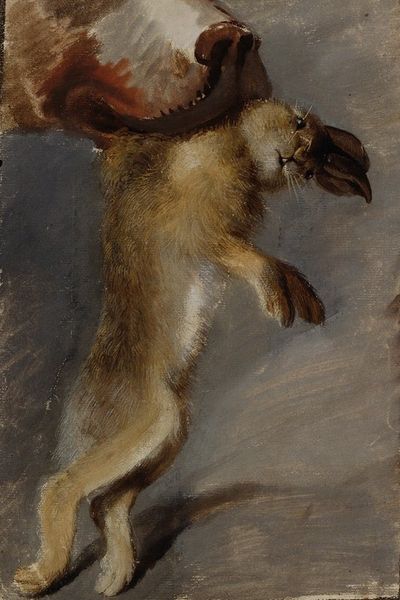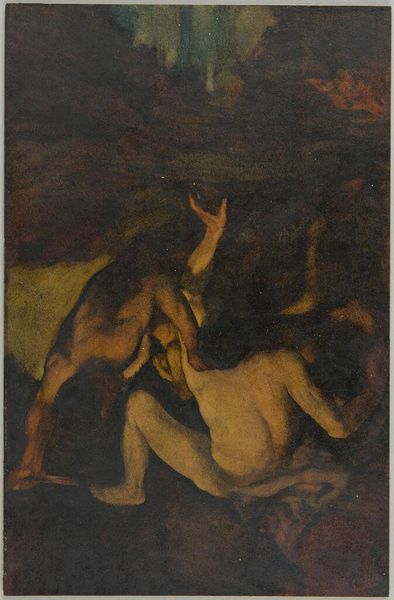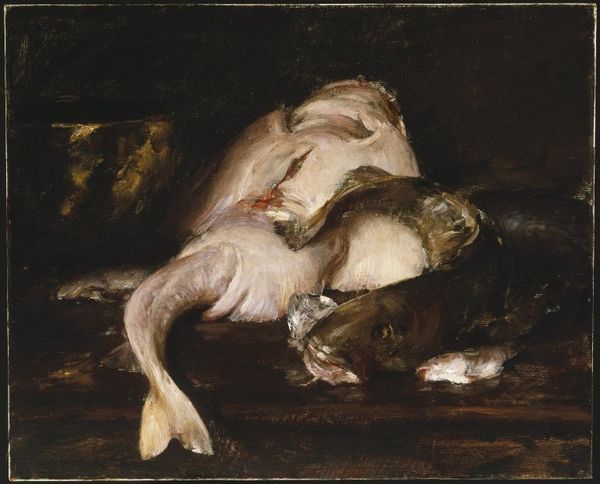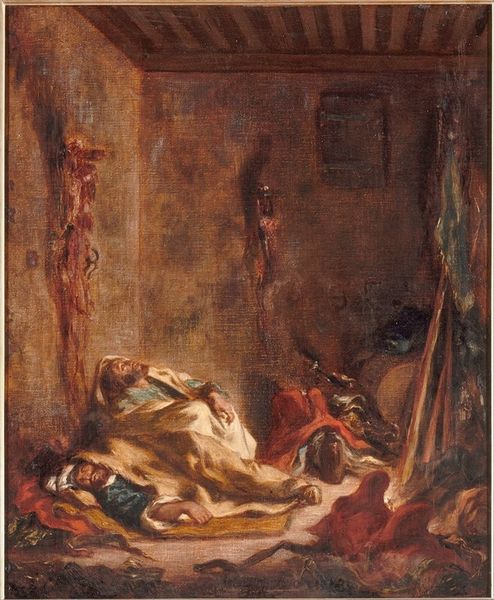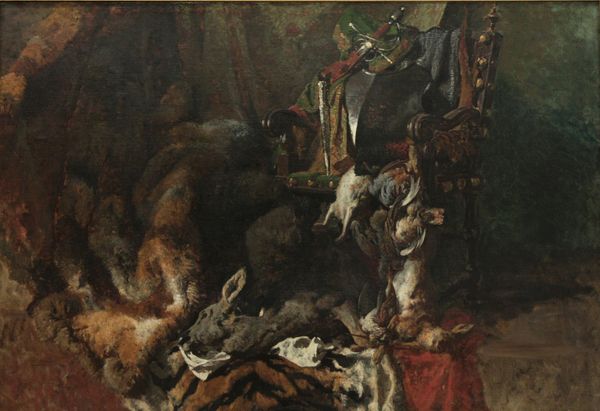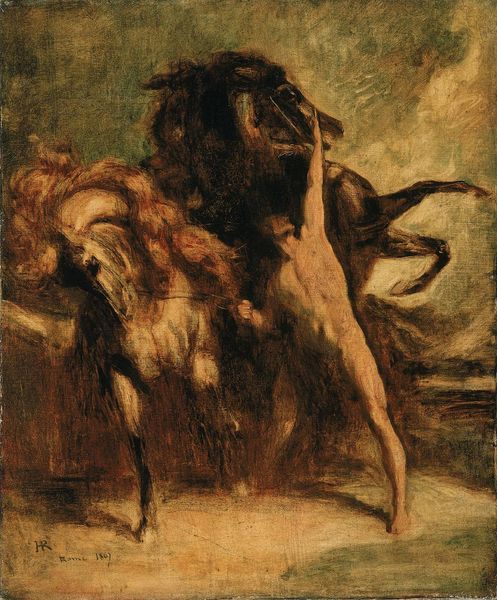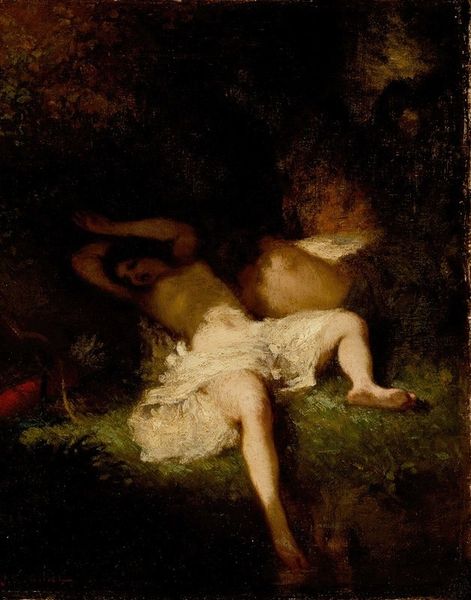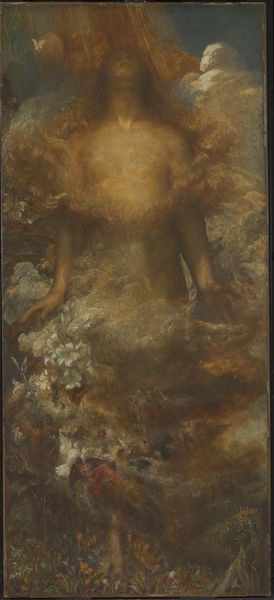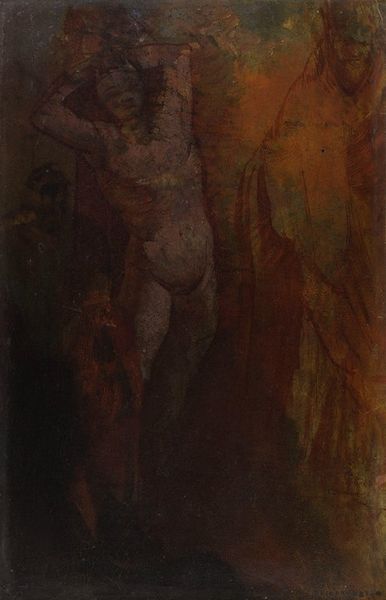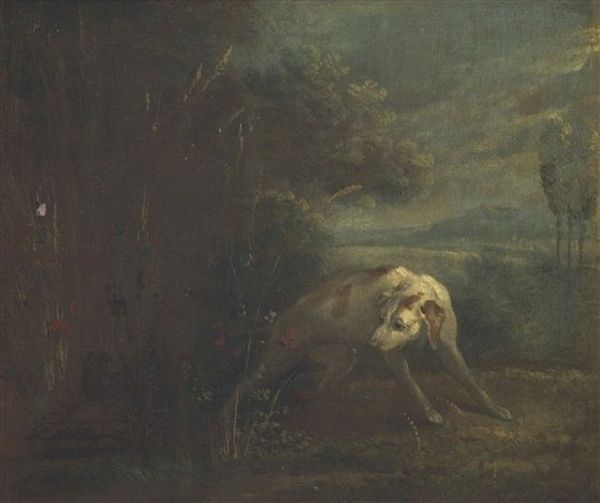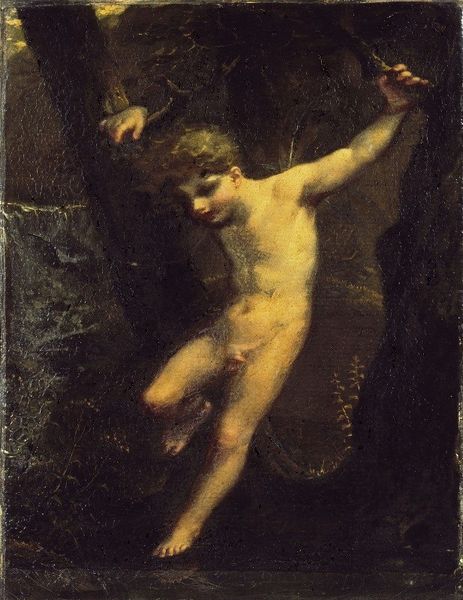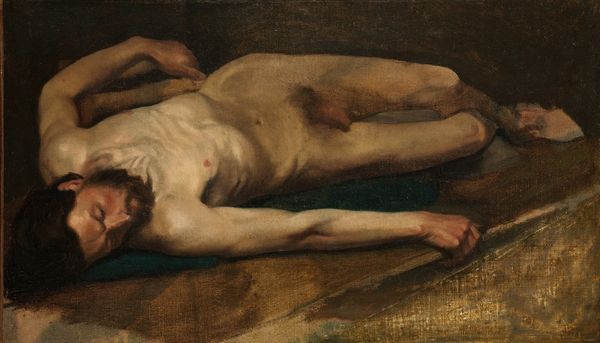
Copyright: Public Domain: Artvee
Curator: This painting, titled "Le Chevreuil," or "The Deer," was created in 1876 by Gustave Courbet. It's rendered in oil paint, depicting a dead deer hanging against what appears to be a rocky backdrop. Editor: Stark. My immediate impression is one of brutality mixed with vulnerability. The way the deer is displayed, hanging upside down, stripped of its grace…it evokes a sense of violated innocence. Curator: Absolutely. The deer is a powerful symbol throughout art history, often associated with both wildness and innocence, frequently linked with hunting culture, and even Christian symbolism around sacrifice. Courbet lived a hunting life in his native Jura so it makes perfect sense that he approached hunting scenes so often. Considering Courbet's dedication to Realism, how do you see this play out here? Editor: For Courbet, it certainly isn't romanticized. There is nothing ennobling in this image. We see the physical reality – the stiffened limbs, the limpness. The death is presented as unceremonious and somewhat unsettlingly banal. There are very direct reminders in this genre painting. How does the imagery affect you, though? Curator: The upturned, exposed posture…it's confronting, almost violating a cultural taboo by showing an animal in this state of complete defenselessness. It challenges our perceptions of nature. Instead of a romantic landscape, it is showing a hunter's victory or bounty. I would imagine for someone accustomed to seeing the Deer associated with the sacredness of the forest would be disturbed to find its life reduced like this. Editor: Right, by presenting this raw reality, Courbet engages with questions of power dynamics, between man and nature and the values within those acts of dominance and disruption. He's placing the animal within the social context of hunting culture. The signature placement is subtle here – a detail which really humanizes the hunting theme in particular! Curator: Absolutely! So what do you leave thinking, from this oil canvas, for Courbet, for ourselves, or for history? Editor: For me, it's a prompt to examine our relationship with the natural world, but in an unexpected, blunt form. It disrupts and stays in your thoughts long after viewing. Curator: Indeed. And for me, a consideration of how even familiar symbols can carry such conflicting emotional weight when placed within a particular artistic and cultural frame.
Comments
No comments
Be the first to comment and join the conversation on the ultimate creative platform.
